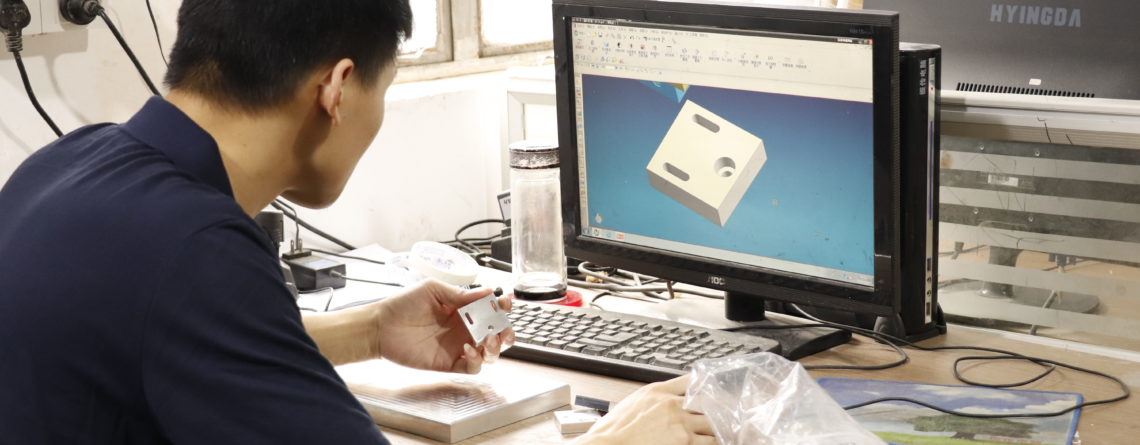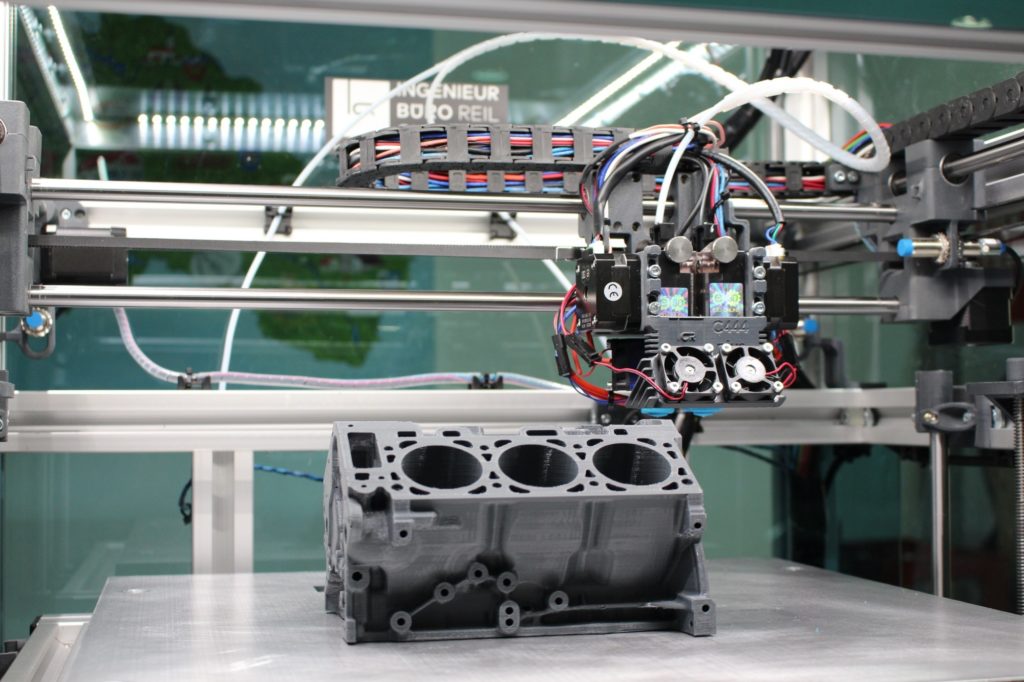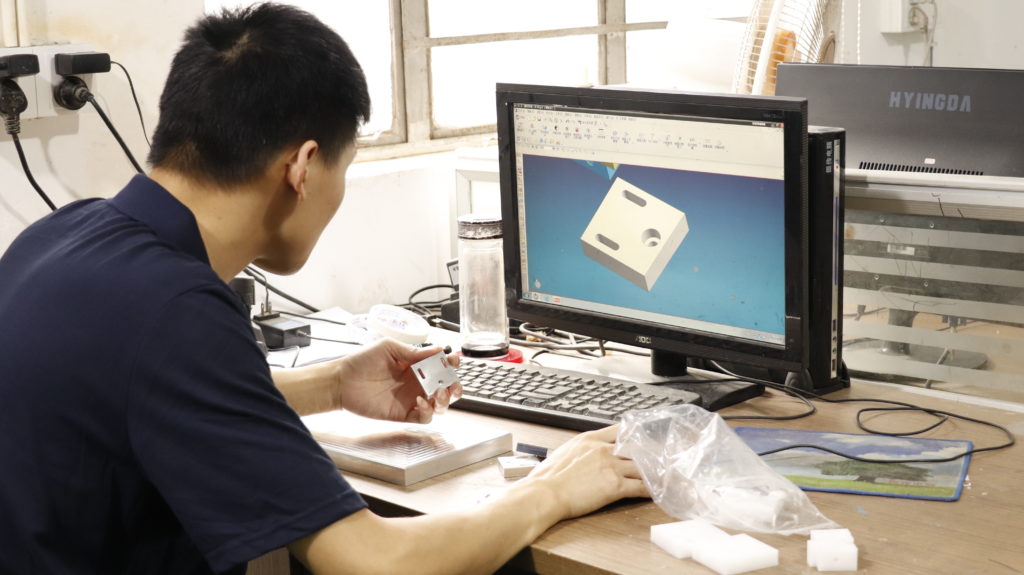What Is Rapid Prototyping?
Have you heard of the engineering term “rapid prototyping”? Are you curious about rapid prototyping services?
It may seem like a confusing concept at first, but don’t worry, it will make sense in no time!
Rapid prototyping provides a way to create fast and efficient models of ideas. It is a cost-effective option that many companies have incorporated. If you are searching for a beneficial method for implementation, this is definitely the way to go.
To learn more, read through our guide on what is rapid prototyping, how it works, and who uses it.
Let’s take a look!
What Is Rapid Prototyping?
Rapid prototyping is the process of creating something that can evaluate a product quickly. Within engineering, a prototype is an early version of a product. Through rapid prototyping, companies can test and analyze the technology.
In other words, rapid prototyping is a method of proofing. You can analyze the future of a product and its success with customers.
As a result, the analysis provides information about if it will be able to function well. Companies use this process at any stage of product development.
Through efficiency, the process is cheaper and quicker. This allows more room for flexibility and making mistakes while creating a product. In the long run, this is more beneficial than other methods.
There are three main steps involved in rapid prototyping. The first is to create the prototype. They do this by making a solution that the company can test.
The next step is reviewing. Many companies do this by giving the prototype to their users and stakeholders. This allows them to get feedback so they can fix the product and make it work better for their customers.
The last step is refining. Based on the feedback that the company receives, they can either fix or modify the product. This will also help them to improve future designs.
Rapid Prototyping Techniques
When asking “what is rapid prototyping”, it is important to know the multiple kinds. Each changes the cost and speed of production.
The first is the fidelity type. In this version, the prototype does not need to look like the finished product yet. Instead, it must show the product’s functionality, appearance, and size.
Low fidelity prototypes are a simple version. This can include sketches or small creations. High-fidelity prototypes will look and work similarly to the end product. This helps to demonstrate how well the actual product will work for a customer.
Low fidelity is the fastest way for prototyping since it only involves a pencil and paper. It is often used in the early stages of designing since the appearance is rough and simple.
Medium fidelity is often used for making a refined yet cost-effective prototype. Visual elements in digital prototyping can be used, but are often avoided at this stage. It is more important to aim focus on its functionality and application.
This can be seen with interactivity, such as through testing out websites. Another option is to use stencils and sketches to make the prototype appear to be of low fidelity. This makes the users see the prototype as a draft rather than as the finished product.
High-fidelity prototypes are very realistic and are often seen as the final product. However, they also take a lot of time to create since they require a lot of experience and knowledge
Another technique is paper prototyping. Drawing and sketching a design is important for designers because it helps them to focus on the function more than the appearance.
This is also valuable because anyone can draw. There are no special tools needed, as is the case for digital work. Since anyone can participate, this helps everyone to contribute to the creation process.
Digital prototyping is useful for animation when researching a design. Many creators use digital methods to make the prototypes interactive. This allows people to experience the design without creating a physical form.
This is especially useful with the improvement of technology. Up-to-date technology provides the opportunity to make prototypes as realistic as possible.
While this is not the finished product, rapid prototyping shows how it will work without building it. The process is also efficient in how it takes a few hours to make an entire prototype.
How To Use Rapid Prototyping
The many functions and uses are an important aspect of the question “what is rapid prototyping”. The person using rapid prototyping must look at complex interactions, functionality, technology, and design. Prototyping is successful when these traits are able to coexist. To make a successful prototype, it is necessary to have the resources and the product assessed in a thorough manner.
A statistic that is commonly used is that 20% of functionality is used 80% of the time. Rapid prototyping demonstrates how a design will work and what it will look like once it is complete. It would be a good idea to focus on the functionality of the product when prototyping since that is its primary importance.
It is also vital to analyze the scenarios. The company cannot know how the customer will actually view the product without examining the possible experiences of users. Seeing the prototype from their perspective is valuable for the refining and modification process.
This also helps to plan iterations. Instead of creating the entire product in one go, rapid prototyping allows it to occur in small chunks. This highlights how important it is to start the prototyping process broadly before examining the specifics.
If a design team observes the specific parts of a prototype too early, they will not have space or time to make revisions. It is important to start with a wide perspective and framework in order to accomplish this.
Going forward, selecting the right tools for a given product is necessary. Each prototype and situation is different, so it is useful to evaluate the project from a unique viewpoint.
Learning how easy it is to use the product is a good first step to take. Another method is through examining it with templates or digital applications. The company should also examine the terms and costs associated with the given product.
Once it is implemented, design teams can utilize ideas such as rapid prototyping 3D printing urethane casting, or CNC machining. This is an efficient and impressive way to test a new product through rapid prototyping machines.
Advantages and Disadvantages of Rapid Prototyping
When examining what rapid prototyping is, it is valuable to examine the costs and benefits. One of the advantages of rapid prototyping is the reduced development time. With a lower time to create a product, there is also a decreased cost. This allows more room for the company to spend money on other important aspects.
Rapid prototyping also allows room for functionality testing. This increases the likelihood that the user will be satisfied with the product.
Here some advantages of rapid prototyping;
- validate a design
- validate assembly
- validate mechanical properties
- validate manufacturability
Within this process, companies are able to analyze how people respond to the product. They will also be able to test if the product is easy to use. These help the customer to have greater overall satisfaction.
This method is also safer to use. Working with multiple people leads to a greater chance of creating a successful idea. This means that there is a lower likelihood of failure, reinforcing the stability of the company and product.
Utilizing low fidelity prototyping also leaves room for mistakes and starting over. There is no penalty for doing something wrong, which is not true of creating a real model.
The aspect of cost is especially important because of how expensive it is to create various prototypes. Testing ideas through rapid prototyping provides safety for inevitable flaws.
It also encourages the successful group work that occurs in the process of design. This helps to incorporate multiple perspectives into the prototype. Not only does this bring a team of people together, but it creates unique ideas that would not have otherwise had recognition.
One of the primary disadvantages of rapid prototyping is the need for skilled labor. There are not many types of materials to use, which means that costs may be expensive for certain parts.
There is also a possibility of overlooking certain key features of the product. Some aspects cannot be prototyped, which leads to user confusion. These mistakes reduce the success of a product’s functions and its connection with their customer base.
In addition to this, there is a risk that prototype features may not be implemented realistically. This is often true with software packages. Before starting a project, it is important to confirm the functionality before starting it.
It is also important to not take every requesting modification that a review may ask for. These may not be realistic or necessary, which inhibits its overall function. This is a mistake that is often made when taking reviews and modifications.
This corresponds with not having clear guidelines about feedback. The company may not have prepared for receiving modifications or did not clearly outline the feedback that they need. As a result, some of the responses may be irrelevant. These requests would be more distracting than useful.
When selecting a fidelity level for the prototype, the decision depends on the product. Many new designs are only sketches, which means that low fidelity is ideal.
It is best to start small with low fidelity. Yet, if the system is already complex, setting requirements may lead to a minimum or high fidelity.
There is not a perfect answer for selecting a fidelity level. It varies depending on the product and how developed the prototype is so far. In order to create the best experience for the customer, it is important to examine the stage that the prototype is currently at.
Why Use Rapid Prototyping
Rapid prototyping helps managers to gain real feedback from customers before releasing the actual product. This reduces the time, cost, and effort involved in making an actual product.
This process also illuminates the risks involved in releasing a product that is not perfect. It leaves room for improvements and listening to what customers have to say.
Product teams need to listen to what their users are telling them in order to improve their prototype. After all, satisfying customers is the primary purpose of a prototype.
In order to satisfy their customers, teams at the company need to incorporate their needs and suggestions into the product. This will help customers to enjoy the product and possibly purchase from the company again in the future.
This also helps to create an environment that reuses old ideas. Teams may keep previous templates or stencils from other projects. This would be helpful in the future for different prototypes.
It also helps the company to be realistic in their planning. Those involved in design and implementation do not plan to fail. Rapid prototyping allows buffer room for mistakes and making modifications.
This incorporates building in realistic delays. When making a high-fidelity prototype, it is often interactive. Companies and teams should plan for responses from their users that they are not expecting to receive.
Overall, rapid prototyping is an extremely beneficial option to implement with your engineering design team. Through understanding how rapid prototyping works, you can incorporate it into your company and take an extra step in reaching out to your customers.
Summing It All Up
In answer to the question of what is rapid prototyping, it will help you and your team to accomplish much more in a fast manner. This is a fantastic method in order to achieve maximum efficiency and productivity.
Next time that you work on an engineering project, we encourage you to try out rapid prototyping! It will provide you and your team with the speed and tools that you need to succeed.
Are you ready to test it out?
Let’s get started!



